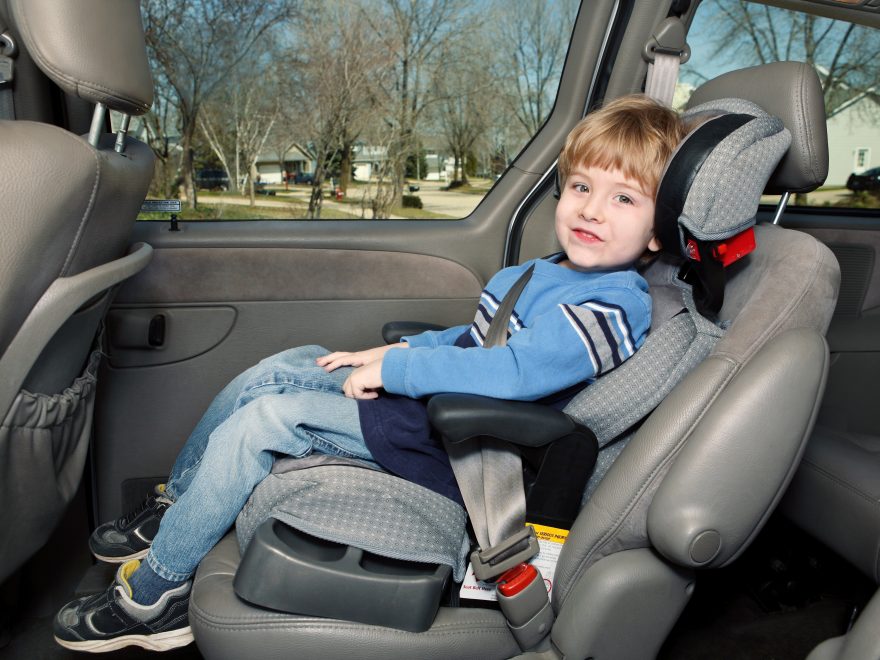Vehicle injuries are the leading cause of child deaths in the United States. These deaths weren’t caused by malfunctioning or poorly made cars, either. They were caused by a lack of proper seating.
A car booster seat plays a huge part in making sure children stay safe while buckled in. In fact, most states require children of a particular age and weight to be buckled in with the aid of a booster seat.
Car seat laws in Louisiana state that children between four and five that weigh between 40 and 60 pounds need to ride in a booster seat.
Parents–especially new parents–sometimes make mistakes when it comes to buckling in their little ones. Unfortunately, a small mistake can lead to horrible consequences when it comes to children’s car safety.
Find Your Online Car Repair Manual Today! ->>
Let’s check out the five biggest mistakes we make when using a car booster seat.
1. Not Using A Car Booster Seat Consistently (Or At All)
A short trip to the store to pick up some bread and eggs sounds safe enough. It’s only a five-minute drive away, and there are only two stoplights between your house and the store. What could go wrong?
Police and other first responders hear this same story all the time following a car accident involving a child. Unfortunately, not securing your child in his or her booster seat can result in a loss that lasts forever.
And then there’s the severe mistake of never using a booster seat. Instead, parents will hold children on their laps. If they have other children, they sometimes make their small children share a safety belt.
It doesn’t matter how much your child fusses, squirms, or cries when you buckle in him or her. You need to ensure your child is secured safely in your vehicle prior to vehicle usage. It’s not just safety procedure–it’s the law.
2. Using A Used Booster Seat
Most booster seats run at just under $100. Some cost over $200. It’s easy to see why some parents are tempted to use a used booster seat instead of buying a new one.
Turning to a used booster seat may well cost you your child’s life.
Although cheaper, most used booster seats don’t come with their original manuals. Having a booster seat’s manual shows you how to correctly use the booster seat.
Additionally, used booster seats–like all used items–may or may not come with all of their parts. A vital piece that could save your child’s life may be missing.
So pass on the used booster seats you see at yard sales and thrift stores. Smile and say, “Thanks anyway,” when your neighbor offers you her son’s old booster seat.
It isn’t about finding a bargain or being nice. It’s about protecting your child.
3. Starting (Or Stopping) Booster Usage Too Soon
Age and weight are just two safety conditions that must be met to move your child into a booster seat.
Another condition is maturity. Children who use booster seats must be mature enough to sit properly and not play with the buckles.
If your child isn’t yet mature enough, you should stick to buckling him or her in a child safety seat. Playing with buckles could lead to them becoming loose or undone.
You could check the rearview mirror every 30 seconds to make sure your child is still buckled into the booster seat. But keep in mind that a fatal collision can happen in a second.
Likewise, don’t move your child out of his or her booster seat too soon. Just because your child turns a particular age or hits a certain weight doesn’t mean you should stop booster usage.
The goal of booster usage is to seat your child higher so a standard seat belt will protect them. The belt needs to lay across his or her lap while riding. Until your child can ride with the belt in its proper place, it’s best to stick to a booster seat.
In fact, many children don’t stop using their booster seats until the age of 10 or 12.
4. Letting the Straps Stay Loose
One all-important detail to pay attention to is the straps on your child’s booster seat.
Many parents don’t tighten these straps as they should. Perhaps it’s out of concern the straps will cause their children discomfort.
Properly tightened straps won’t cause your child discomfort. They will, however, prevent your child from possibly coming out of the booster seat during a crash.
Think of the straps on the booster seat like those on a parachute. Parachute straps must also be tightened snugly so the wearer doesn’t fall out of the parachute harness.
5. Positioning the Booster Seat Incorrectly
Once a child becomes booster seat-eligible, many parents will position the booster seat so it faces front. The idea is that facing back is hazardous to an older child. In the event of a crash, his or her legs will be squished between the booster seat and the back seat.
This is a myth. It’s actually far safer for an older child to remain facing backward for as long as possible.
During a crash, the front seats will jerk backward due to the impact. When a child is facing the back of the car, the front seat will strike the booster seat. Since booster seats are made of hard plastic backing, they will bear the brunt of the impact.
Additionally, some parents place their children’s booster seats in the front passenger seat. Others place the seat in either of the back side seats.
Both positions are dangerous. You should always place a booster seat in the center back seat.
Consider the various angles at which an oncoming car can strike you. It can happen from everywhere–except the center. Thus the center back seat is the safest position for a young child.
Have Any More Questions? Contact Us!
You rely on a car booster seat to safely transport your child. For more questions and concerns about booster seats, please don’t hesitate to reach out to us.
Do you know of another major car booster seat mistake? Tell us in the comments!







